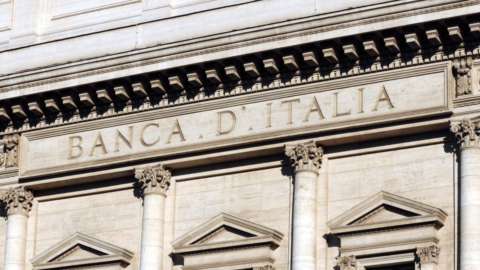(Reuters) - The Italian economy is expected to grow at a more than encouraging pace of 1,6% this year, stabilize at 1,5% in 2018 and slow slightly to 1,3% the following year.
Black on white, these are the latest OECD estimates to be compared with the official figures in the Update Note to the Def at the end of September, which indicate 1,5% for all three years.
More recently Istat has announced that in the third quarter the GDP grew by 0,5% on a quarter.
In the chapter that the Organization for Economic Cooperation and Development dedicates to Italy on the occasion of the latest 'Economic Outlook' report, the economists led by Angel Gurria refer to a recovery that is expanding without however neglecting the most vulnerable points of the economic situation, identified in the mountain of public debt and in the non-performing loans in the banks' portfolios.
In both cases - moreover - the prospect invites caution but is anything but gloomy.
After closing 132,0 at 2016% as a percentage of GDP, the performance projected by the OECD for debt/GDP is down to 131,6% this year, 129,8% next and 127,7% in 2019 (identical to the Def expectation for 2017, while the government expects 130% next year and 127,1% in 2019).
“The high public debt reduces the room for maneuver of fiscal policy, making it excessively sensitive to changes in interest rates” warns the Parisian organization.
As for non-performing loans, the fruits of the measures developed so far by the government are acknowledged, reiterating however that the burden of non-performing loans has a negative effect on confidence in the banking sector, as well as threatening to jeopardize public finance balances.
“The government has allocated 20 billion euros – 1,2% of GDP – to support the banking system and has used about half of it to date. The executive's strategy has so far been based on a combination of asset support and resolution,” writes the report.
From 'moderately expansive' budgetary policy will move to substantially neutral positions next year, continues the OECD analysis, from which in this way also comes a sort of first judgment on the contents of the manoeuvre.
In terms of growth 'tout short', the OECD tone is in any case unequivocally positive: reference is made to the main engine of the recovery which remains private demand, but also to an encouraging trend in investment and export items, supported by the former by tax incentives and the second from foreign demand that shows no signs of slowing down.
However, the path of structural reforms must continue hand in hand with the consolidation of growth, in order to favor an increase in the primary surplus with the tools of the fight against tax evasion and the rationalization of public spending which have positive effects both on the degree of social cohesion and both on growth potential.
“A slowdown in the course of structural reforms and an overrun of budgetary targets after the elections scheduled for early 2018 would have negative effects on confidence and risk derailing a lasting economic recovery” warns the OECD.
To close on a positive note, the expectations on the deficit/GDP for 2017 and 2018 are identical to those of the government - at a nominal level - equal to 2,1% and 1,6% respectively, while for 2019 the government indicates 0,9% and the OECD 1,1%.
The improvement of the labor market - from 11,7% in 2016 the OECD idea is of a decreasing unemployment rate to 11,2% this year, 10,5% next and 10,1% in 2019 - yes it will also result in an increase in disposable income.





